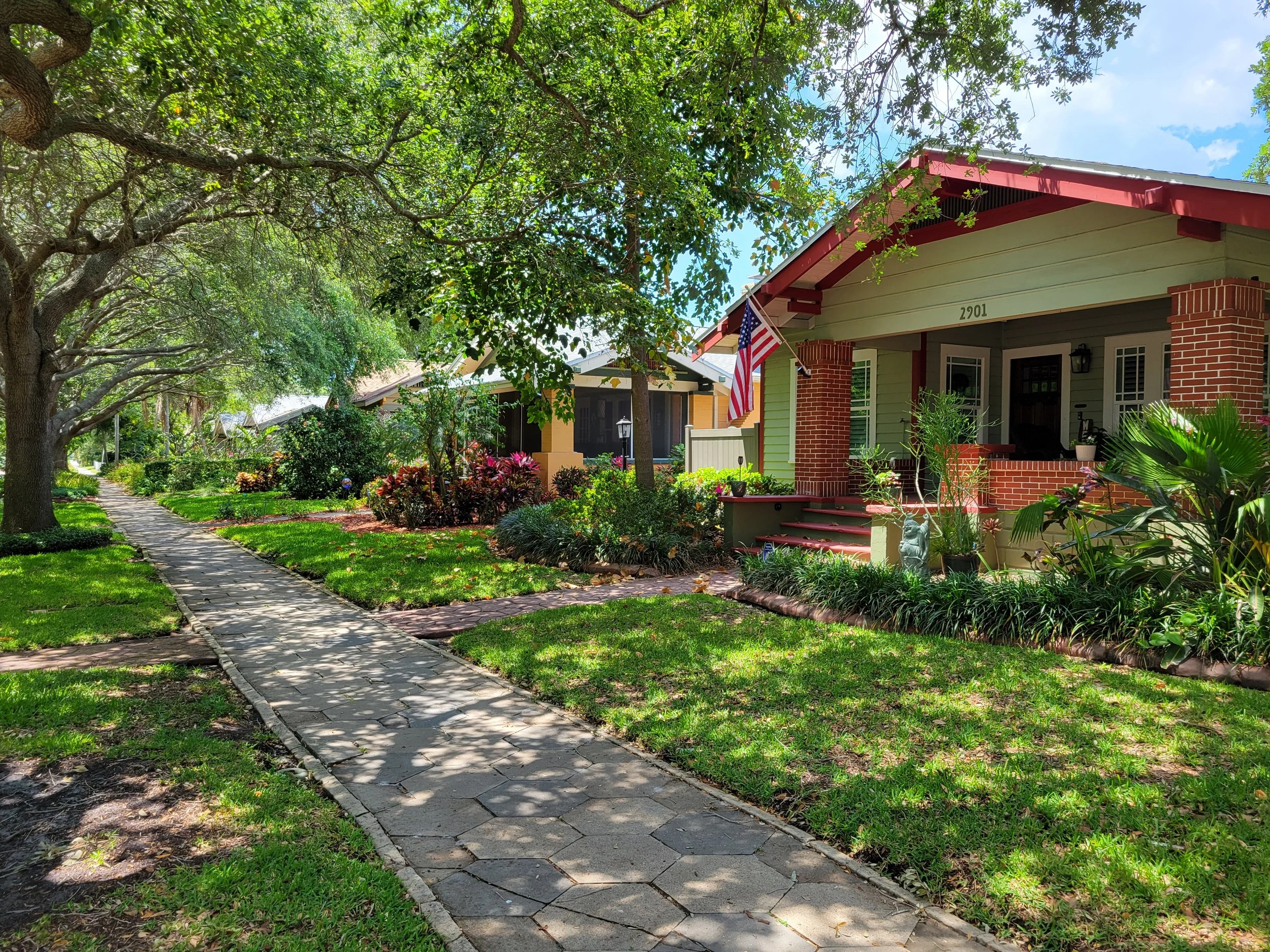About
A vibrant, designated National Historic District in St. Petersburg, Florida, renowned for its concentration of historic bungalows, a thriving Artist Enclave, and a strong, community-driven approach to preservation and art.
Ⅰ.
History
IN 1912 Kenwood’s first developer, Philadelphian Charles Hall, bought 160 acres of avocado groves about two miles northwest of downtown and quickly subdivided, developed, and advertised building lots. Kenwood offered easy access to downtown by automobile or the Central Avenue streetcar. Hall’s first model home, now Craftsman House Gallery, was built in 1918 to be visible on this thoroughfare. He donated Kenwood’s Seminole Park to the city, with the stipulation that its name never be changed.
Two of Hall’s subdivisions – those between Central Avenue and Fifth Avenue North, west of 25th Street North – form the largest parcel of land within what is now Historic Kenwood. George F. Young soon developed a parallel area east of 25th Street North, and other developers undertook projects in the area between Fifth and Ninth Avenues North.
Kenwood was St. Pete’s first suburb and its first neighborhood for year-round residents, in contrast to downtown districts, many of whose inhabitants moved north in the summer along with their tourist clientele. The building of St. Petersburg High School in 1926 – touted as the nation’s first million-dollar high school! – both reflected and further impelled the city’s westward development.
Most of Kenwood’s homes were built between the 1920s and 1950s, and 170 were moved here from other neighborhoods in the 1930s. Beginning in the 1950s, however, migration to the newer suburbs here followed a national trend, as cars and air conditioning became more prevalent. Kenwood fell into serious decline over the next three or four decades. Revitalization began in the 1990s when several people began buying and restoring historical properties in Kenwood. Our neighborhood association was formed and has championed revitalization ever since. In 2003, Historic Kenwood earned listing on the National Register of Historic Places.
Ⅱ.
Mission
The Historic Kenwood Neighborhood Association aims to foster a diverse and inclusive community to enhance the quality of life for all individuals within our neighborhood, including supporting the arts and maintaining the historic charm of Historic Kenwood.
Ⅲ.
Purpose
The purpose of the Historic Kenwood Neighborhood Association shall be to promote a sense of community for our neighborhood; forge working relationships with the City; foster civic participation; promote beautification and pride in the neighborhood; maintain, enhance, and encourage quality housing that reinforces the character and charm of our historic neighborhood; and provide a focal point for all neighborhood issues that affect a significant number of our residents.
Ⅳ.
Administrative
Budget, bylaws and meeting minutes.







